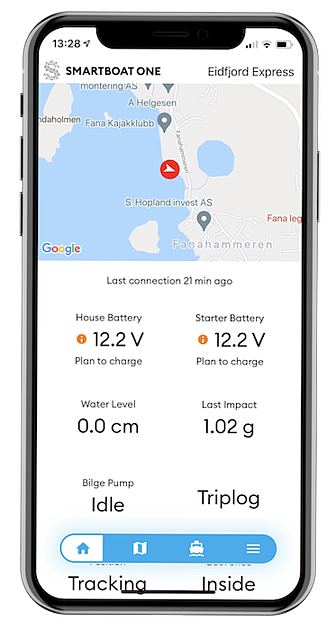Does this sound familiar?
You walk down to the dock with your family, picnic basket in hand, sunscreen on the noses. You've been planning and talking about this Sunday out on the water all week long. You take off the cover, tell your son to be ready to cast off the ropes, make everybody put on their lifejackets and get them seated safely.
And then you smile and try to start the boat. It's dead. All you hear is that awful click click click sound. You laugh it off and try again. Click Click Click again.
Smiles gone.
Your wife looks at you like you're an idiot.
The children look at you like you're an idiot.
You yourself feel like an idiot.
And worst of all: the day is lost.
Suddenly you realize just how important your boat battery is. It's the heart of the boat.
There was a time as a boat owner (before Sensar Marine) that I had this small nervous feeling inside every time I walked up to my boat. Would it actually start? And an internal sigh of relief when I heard the Mercury fire up properly.
For the record, I have a 21 foot daycruiser - an Uttern, around 7 years old with circa 400 hours on the 150 horsepower engine. And as I am writing this, I just got notified that my house battery just dropped below 12.2 V.
What does 12.2 V mean anyway? I have a 12 volt battery so surely that's just a bare fraction off? Why worry?
%20copy.png?width=787&name=iphone-x-mockup-scene@2x%20(2)%20copy.png)
Thanks to the new app update, I've got more help than ever to answer this question and avoid my battery ruining my Sunday plans this weekend.

Descriptive Battery Statuses
Going into my app, I see that based on my 12.2V status, I need to “Plan to charge” the battery.
Don't panic. Don't freak out. Just an Amber icon. But do go charge your battery one day soon.
Peace of mind.
Here are the facts.
A resting, fully charged 12-volt battery has around 12.7- 12.8 volts, and 12.0 volts, actually, equates to 30% charge.
And mine is now at 12.2 - about a 50% charge.
For a long time, I never knew this. Idiot that I am (see above where boat would not start), I thought that, of course, my battery would need to sink to 6 volts to be at 50%.
Makes logical sense, right? It's a 12 volt battery after all!?!
Moving forward in the Sensar Marine app, you'll see the following statuses based on your battery charge values:
| Status |
12 Volt Battery |
24 Volt Battery |
| Charging |
Over 13.2 V |
Over 26.4 V |
| OK |
12.2 V - 13.2 V |
24.4 V - 26.4 V |
| Plan to Charge |
11.9 V - 12.2 V |
24.0 V - 24.4 V |
| Charge Now |
2 V - 11.9 V |
17 V - 24.0 V |
| Not Connected |
0 V - 2 V |
0 V - 17 V |
Battery Care
Learning from boat and battery care experts, like our very own Paal Kaperdal, I have learned that good battery care means doing my best to keep the battery above 50% charge — or 12.2 V.
Every time my battery, a standard lead acid boat battery, dips below 50% I am borrowing charge from the future life of the battery.
Can I shorten a battery's normal expected lifetime through improper use?
Yes, absolutely.
Is it ok if i just partially charge my battery?
No, you should charge it fully to prevent what is called “sulfation” — the formation or build-up of lead sulfate crystals on the surface.
Do I need to use up all charge before I fully charge the battery?
No, deep discharge like that harms the battery.
Can I charge when it's cold?
Slow charge only!
Disposal?
Do not throw out your battery in your garbage. Find your nearest option to recycle. Lead is a toxic.
In further blog posts, we'll further explore how and why you should take good care of your boat battery - as well as the most common ways that people abuse them. But for now, I am happy to have Sensar Marine doing some of that work for me.
See the battery features in action


%20copy.png?width=787&name=iphone-x-mockup-scene@2x%20(2)%20copy.png)

.png?width=400&height=300&name=SamBlogPost%20(3).png)
.png?width=400&height=300&name=Catalina1%20(1200%20x%20628%20px).png)
.png?width=400&height=300&name=Erik%20A%20Header%20(1).png)